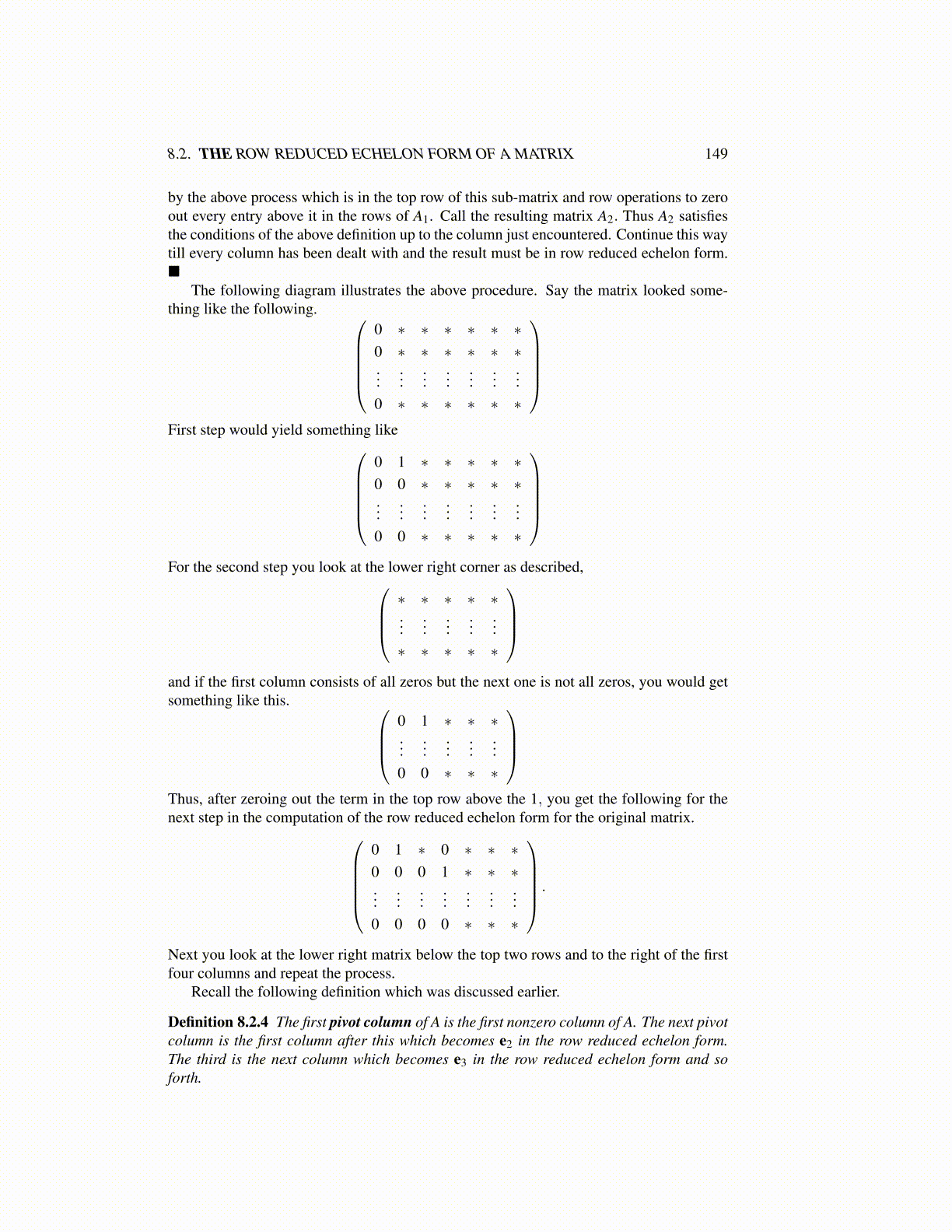
8.2. THE ROW REDUCED ECHELON FORM OF A MATRIX 149
by the above process which is in the top row of this sub-matrix and row operations to zeroout every entry above it in the rows of A1. Call the resulting matrix A2. Thus A2 satisfiesthe conditions of the above definition up to the column just encountered. Continue this waytill every column has been dealt with and the result must be in row reduced echelon form.■
The following diagram illustrates the above procedure. Say the matrix looked some-thing like the following.
0 ∗ ∗ ∗ ∗ ∗ ∗0 ∗ ∗ ∗ ∗ ∗ ∗...
......
......
......
0 ∗ ∗ ∗ ∗ ∗ ∗
First step would yield something like
0 1 ∗ ∗ ∗ ∗ ∗0 0 ∗ ∗ ∗ ∗ ∗...
......
......
......
0 0 ∗ ∗ ∗ ∗ ∗
For the second step you look at the lower right corner as described,
∗ ∗ ∗ ∗ ∗...
......
......
∗ ∗ ∗ ∗ ∗
and if the first column consists of all zeros but the next one is not all zeros, you would getsomething like this.
0 1 ∗ ∗ ∗...
......
......
0 0 ∗ ∗ ∗
Thus, after zeroing out the term in the top row above the 1, you get the following for thenext step in the computation of the row reduced echelon form for the original matrix.
0 1 ∗ 0 ∗ ∗ ∗0 0 0 1 ∗ ∗ ∗...
......
......
......
0 0 0 0 ∗ ∗ ∗
.
Next you look at the lower right matrix below the top two rows and to the right of the firstfour columns and repeat the process.
Recall the following definition which was discussed earlier.
Definition 8.2.4 The first pivot column of A is the first nonzero column of A. The next pivotcolumn is the first column after this which becomes e2 in the row reduced echelon form.The third is the next column which becomes e3 in the row reduced echelon form and soforth.